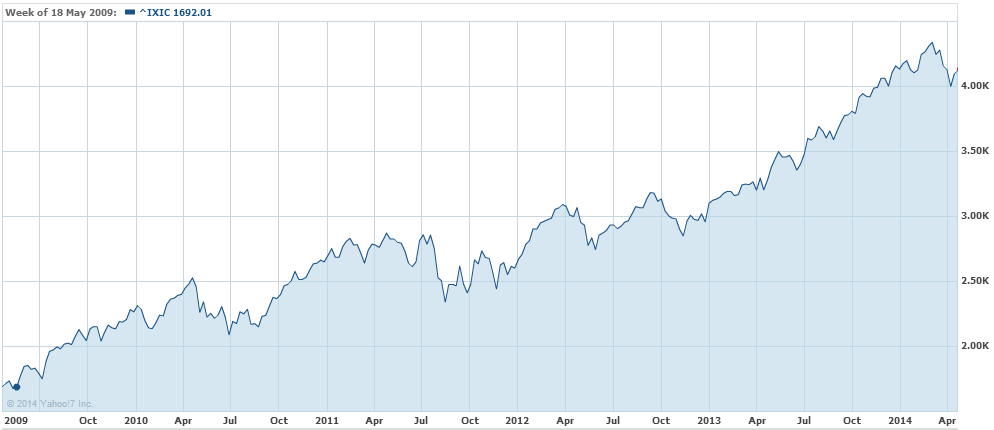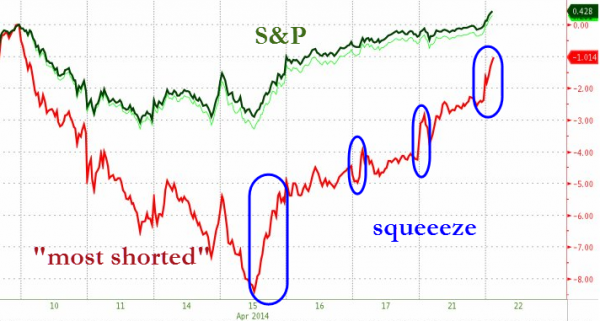The recent reversal in the tech bust has been quite something to behold:

This looks like a classic short squeeze following Janet Yellen’s recent dovish speech. Zero Hedge has a useful chart for evidence:

We are still a good way from any new high in the Nasdaq and the chances are that when US data warms up and rate hikes expectations return high-beta is going to resume its slide. David Einhorn of Greenlight Capital thinks so:
We have repeatedly noted that it is dangerous to short stocks that have disconnected from traditional valuation methods. After all, twice a silly price is not twice as silly; it’s still just silly. This understanding limited our enthusiasm for shorting the handful of momentum stocks that dominated the headlines last year.
Now there is a clear consensus that we are witnessing our second tech bubble in 15 years. What is uncertain is how much further the bubble can expand, and what might pop it.
In our view the current bubble is an echo of the previous tech bubble, but with fewer large capitalization stocks and much less public enthusiasm. Some indications that we are pretty far along include:
- The rejection of conventional valuation methods;
- Short-sellers forced to cover due to intolerable mark-to-market losses; and
- Huge first day IPO pops for companies that have done little more than use the right buzzwords and attract the right venture capital.
And once again, certain “cool kid” companies and the cheerleading analysts are pretending that compensation paid in equity isn’t an expense because it is “non-cash.” Would these companies be able to retain their highly talented workforces if they stopped doling out large amounts of equity? If you are trying to determine the creditworthiness of these ventures, it might make sense to back out non-cash expenses. But if you are an equity holder trying to value the businesses as a multiple of profits, how can you ignore the real cost of future dilution that comes from paying the employees in stock?
Given the enormous stock price volatility, we decided to short a basket of bubble stocks. A basket approach makes sense because it allows each position to be very small, thereby reducing the risk of any particular high-flier becoming too costly. The corollary to “twice a silly price is not twice as silly” is that when the prices reconnect to traditional valuation methods, the derating can be substantial. There is a huge gap between the bubble price and the point where isciplined growth investors (let alone value investors) become interested buyers. When the last internet bubble popped, Cisco (the best of the best bubble stocks) fell 89%, Amazon fell 93%, and the lower quality stocks fell even more.
In the post-bubble period, people stopped talking about valuing companies based on eyeballs (average monthly users), total addressable market (TAM), or price-to-sales. When the re-rating occurred, the profitable former high-fliers again traded based on P/E ratios, and the unprofitable ones traded as a multiple of cash on the balance sheet.
Our criteria for selecting stocks for the bubble basket is that we estimate there to be at least 90% downside for each stock if and whenthe market reapplies traditional valuations to these stocks. While we aren’t predicting a complete repeat of the collapse, history illustrates that there is enough potential downside in these names to justify the risk of shorting them.
Sounds right. Full report below (h/t ZH).

